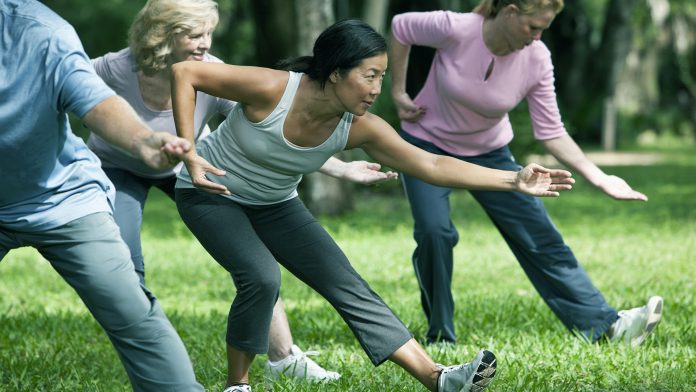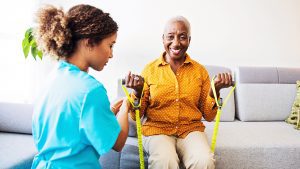
Luke Price, Senior Programme Manager at the Centre for Ageing Better, spoke to Health Europa about the physical activity levels for older adults during the pandemic.
The age profile of the UK is rapidly shifting. In the year 2000, around one in six people in the UK was aged 65 or older. This is now one in every five people, and by 2048 it will be one in four. However, whilst the age profile of the country is changing, we do not all experience ageing in the same way: individuals in the wealthiest parts of the country can expect to live over five years longer than those in the poorest, and the wealthiest people have almost twice as many years of disability-free life ahead of them at age 65 compared to the poorest. Luke Price, Senior Programme Manager at the Centre for Ageing Better, details to Health Europa Quarterly how the COVID-19 pandemic has impacted the physical activity levels for older adults.
Why is physical activity important, and how much should we be doing?
Many different factors affect our health as we age. Alongside things like the homes we live in and the jobs we do, various behaviours such as what we eat and how much we exercise play a major role in maintaining good health and preventing a range of health conditions. Physical activity is particularly crucial to our health and wellbeing. The UK Chief Medical Officers said in 2019 that “if physical activity were a drug, we would refer to it as a miracle cure, due to the great many illnesses it can prevent and help treat”. We know, for example, that inactive people are at increased risk of developing painful musculoskeletal conditions and that excess weight increases the risk of back pain and/or developing osteoarthritis. We also know that regular physical activity reduces the risk of hip and knee osteoarthritis pain by 6%, depression by up to 30% and falls by 76%.
Yet despite its importance, nearly a quarter of UK adults in and approaching later life (loosely defined as those aged 50-70) are ‘inactive’ and do less than 30 minutes of exercise a week. This proportion increases with age and is higher among people living in the most deprived neighbourhoods.
How much physical activity should older adults do?
Generally speaking, any amount of physical activity is better than none and doing more is even better. Beyond this, the UK Chief Medical Officer’s report sets out the following guidelines:
- Break up periods of inactivity with activity to minimise sedentary time;
- Do at least 150 minutes of moderate physical activity (increased breathing, able to talk) or at least 75 minutes of vigorous physical activity (breathing fast, difficulty talking);
- Build strength on at least two days a week (including everyday activities like carrying shopping bags as well as things like going to the gym or doing yoga); and
- Engage in activities that improve balance at least two days a week (including things like dance, bowls or Tai Chi).
Who is most likely to be inactive and why? As well as preventing and delaying a range of health conditions, physical activity can also help us maintain our ability to carry out day-to-day activities, our independence and our quality of life as we grow older. Our latest research shows that these ideas are understood and accepted by people aged 50-70, many of whom see physical activity as a way to maintain and improve their quality of life whilst avoiding negative health outcomes. Despite this understanding, too many older people are inactive due to a range of psychological, emotional and practical barriers, including common life events such as becoming a carer or not having a good role model or the support of family and friends.
There are also significant inequalities in terms of who is and who is not active – just under a quarter (22.9%) of 50-59-year-olds are inactive, around a quarter (25.7%) of 60-69-year-olds, and two fifths (40.6%) of those aged 70+ are inactive. Alongside this, older people in the poorest neighbourhoods are more than twice as likely to be physically inactive as people in the wealthiest.
Inequalities in physical inactivity also play out across ethnicity, with higher levels of inactivity amongst those aged 50-70 from a South Asian (37.6%) or Black (30.1%) background as compared to those from a White British (23.4%) background. Almost two thirds (60%) of people aged 50-70 who are unable to work due to illness and disability are inactive, as are nearly half (47%) of those with no qualifications.
What effect has the COVID-19 pandemic had on the physical activity levels of older adults?
Perhaps unsurprisingly, the COVID-19 pandemic and associated lockdowns have negatively affected the physical activity levels of those aged 50-70.
Before the pandemic, activity rates were growing for people over the age of 55. However, in the period March 2020 – May 2020, there was a significant drop off in activity rates for those aged between 55 and 84. Much of this decrease will be due to a combination of factors, including some people being asked to shield and, more generally, a reduction in the number of opportunities to engage in physical activity. More recent data suggest that despite lockdown easing in the summer of 2020, activity rates never really recovered to pre-pandemic levels, with a 2.5% increase in inactivity amongst those aged 55-74 and a 3.7% increase for those aged 75+. This suggests that unless concerted action is taken to support older people regain previous activity levels, there could be very negative health impacts on those who are no longer being active.

What can we do to encourage and support older people to be more physically active?
An extensive range of approaches can be taken to support older people to become more active as we emerge from the pandemic, focusing on the personal and environmental reasons that older people do not exercise. Ultimately this requires decisive co-ordinated action by multiple stakeholders including:
- Investment in cost-effective strength and balance programmes;
- Promoting active travel by investing in walking and cycling infrastructure
- Promoting and investing in behaviour change interventions that tackle barriers specific to this age group; and
- Encouraging a more age-positive and inclusive offer from the fitness and leisure sector.
People are unlikely to be swayed about arguments focusing on a certain number of minutes a week or the potential health problems they might face if they do not move more.
Messaging, therefore, needs to be focused on the short and medium-term benefits that an older person can expect from physical activity and emphasise that doing even a little is better than doing none at all. For those older people who are still struggling to get outside, there are plenty of online resources such as 10Today that can help build physical activity into their everyday routine.
COVID-19 has highlighted both the inequalities in health we have in the UK and the potential dangers of inactivity to health. Unless action is taken to enable older people to become more physically active, we will see more people spending increasing numbers of years in poor health.
Luke Price
Senior Programme Manager
Centre for Ageing Better
https://www.ageing-better.org.uk
https://twitter.com/Ageing_Better?ref_src=twsrc%5Egoogle%7Ctwcamp%5Eserp%7Ctwgr%5Eauthor
This article is from issue 19 of Health Europa Quarterly. Click here to get your free subscription today.









